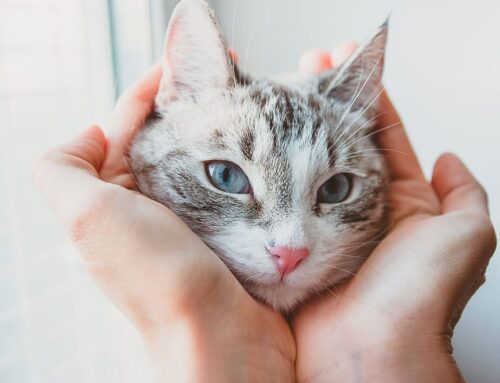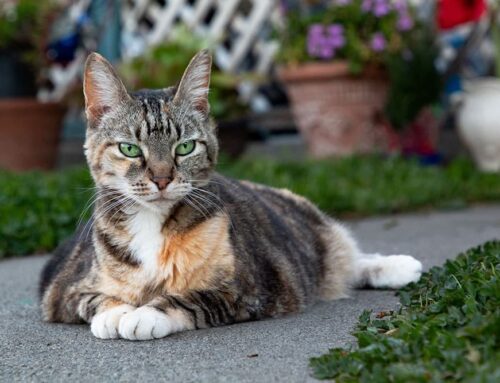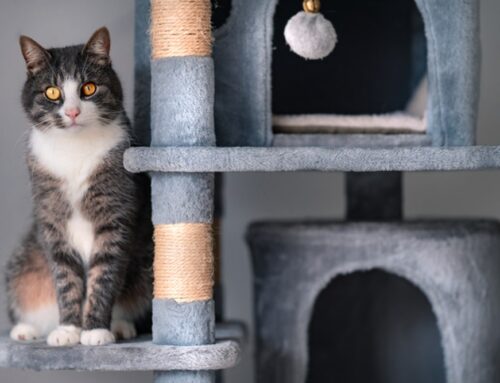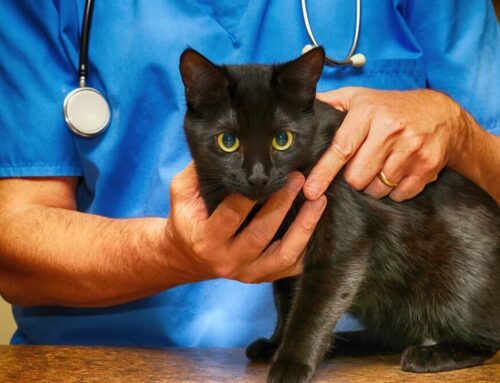Feline asthma is the most commonly diagnosed respiratory condition in cats, and an estimated 1% to 5% of American cats are affected by this progressive disease. Our team at Just Cats Clinic wants to educate you on this respiratory affliction so you will know the signs if your cat is affected.
Feline asthma is caused when your cat has an allergic response to elements they inhale. Your cat’s immune system is stimulated to produce antibodies to counteract the allergens. When your cat contacts the allergens again, the antibodies are activated, and cause an inflammatory response that results in irritation, swelling, and airway constriction. Mucous production may also occur in the airways. This response makes breathing difficult for your cat. All cats can be affected, but signs typically begin between the ages of 4 and 5. Outdoor cats are at higher risk because they are exposed to more potential allergens. Siamese cats may be predisposed to feline asthma, but large studies have not supported this claim consistently.
What causes feline asthma in my cat?
Your cat could potentially have an allergic response to almost anything, but common allergens that cause reactions include:
- Tobacco smoke
- Pollen from trees, weeds, and grass
- Dusty cat litter
- Mold and mildew
- Vapors from cleaning fluids
- Dust mites
- Smoke from fireplaces and candles
What signs will my cat show if they have feline asthma?
During an asthma attack, your cat will have difficulty breathing, and will exhibit signs such as wheezing, open-mouthed breathing, coughing, and exaggerated abdominal movements when they inhale and exhale. Many cats demonstrate a characteristic posture where they hunch close to the ground and extend their neck forward.
Feline asthma attacks have four severity ratings.
- Mild — You see signs occasionally, but not daily, and your cat’s daily life is not restricted.
- Moderate — You see signs occasionally, but not daily, that are severe enough to restrict your cat’s usual activities.
- Severe — You see signs daily that are severe enough to restrict your cat’s usual activities.
- Life-threatening — Extreme airway constriction occurs and completely closes off air movement, resulting in oxygen deprivation. Your cat’s lips and nose will turn from pink to blue.
What do I do if my cat is having an asthma attack?
During an asthma attack, your cat will be extremely stressed, so you must stay calm and not exacerbate their anxiety. Do not attempt to move them, because placing pressure on their chest could further inhibit their ability to breathe. If your cat’s lips and nose start to turn blue, or if they collapse, take them to the veterinary hospital immediately.
How is my cat diagnosed with feline asthma?
No test can definitively diagnose feline asthma. Other potential conditions that cause similar signs, such as heart disease, heartworms, lungworms, and respiratory infections, must be ruled out before a firm diagnosis can be reached.
Your cat will undergo a thorough physical examination, with special attention given to heart and lung auscultation. Blood tests will be performed to check their white blood cell levels, as well as to test for heartworms. A fecal test will be performed to check for lung worms. An X-ray will be taken of your cat’s chest. Asthmatic cats typically exhibit a particular pattern on X-ray, and their lungs appear larger than normal. A bronchoscopy, which involves passing a small camera through your cat’s mouth to their lungs, may be performed under anesthesia. The inside of your cat’s airways will be evaluated for changes typically found in asthmatic cats, and cell samples from their airways will be collected and examined for inflammatory elements.
Note that allergy tests are available, but they tend to be unreliable at determining the responsible respiratory system allergens.
How is feline asthma treated in my cat?
Feline asthma is not curable, but medications can manage the condition. Feline asthma is treated with corticosteroids to decrease the lung inflammation, and bronchodilators to dilate the airways. Administering these medications orally or by injection is helpful, but inhalant administration is more effective because a higher drug concentration is administered directly to the lungs. You will be given a mask to place over your cat’s face. Then, you will fit an inhaler into the mask, allowing your cat 10 seconds to inhale a puff or two of the drug.
How can I prevent feline asthma from affecting my cat?

While no definitive means can prevent feline asthma, you can take the following steps to help reduce your cat’s chances of asthma, and to decrease the condition severity if they are affected.
- Do not smoke around your cat.
- Do not wear perfume or cologne around your cat.
- Do not use aerosol sprays or air fresheners.
- Use unscented, low dust cat litter.
- Maintain your cat at a healthy weight, since obesity increases the severity.
Feline asthma is a concerning issue for cat owners, but knowing the signs to look for ensures your cat will receive prompt attention if they are affected by this condition. If you are concerned that your cat may suffer from feline asthma, contact Just Cats Clinic to schedule an appointment.













